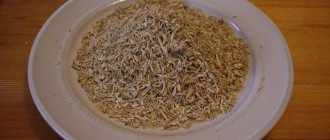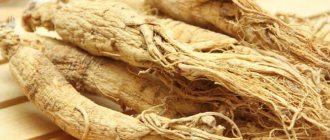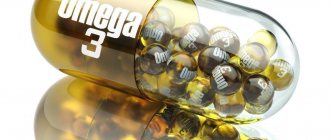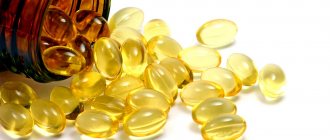Motrin is a drug (tablets) that belongs to the pharmacological group of anti-inflammatory and antirheumatic drugs. The instructions for use highlight the following features:
How to dissolve vascular plaques, normalize blood circulation, blood pressure and forget the way to the pharmacy
- During pregnancy: contraindicated
- When breastfeeding: contraindicated
- In childhood: with caution
- For liver dysfunction: with caution
- If renal function is impaired: with caution
- In old age: with caution
Release form and composition
Motrin is produced in the form of tablets: flat-cylindrical, pale yellow in color, with minor inclusions, with a score and a chamfer (10 pieces each in a contour cell package, in a cardboard box there are 1, 2 or 3 packages and instructions for using Motrin).
1 tablet contains:
- active ingredient: naproxen – 250 mg (calculated as 100% substance);
- additional components: potato starch, lactose monohydrate, magnesium stearate, tropeolin O dye, povidone.
Pharmacological properties
Pharmacodynamics
Motrin is an NSAID with analgesic, anti-inflammatory and antipyretic effects due to non-selective inhibition of the activity of cyclooxygenase 1 (COX-1) and cyclooxygenase 2 (COX-2), which regulate the production of prostaglandins.
Pharmacokinetics
The drug is characterized by rapid and complete absorption from the gastrointestinal tract (GIT). The bioavailability of naproxen is 95%, the completeness and rate of absorption are practically independent of food intake. In blood plasma, the maximum concentration of the substance (Cmax) after oral administration is observed after 2 hours.
Naproxen is almost completely (99%) bound to plasma proteins, the half-life (T1/2) is 12–15 hours. The equilibrium concentration (Css) in blood plasma is observed after 2–3 days.
The metabolic transformation process occurs in the liver with the participation of the CYP2C9 enzyme system with the formation of dimethylnaproxen. Clearance of the active substance is 0.13 ml/min/kg. Excreted by the kidneys by 98%, including unchanged - up to 10%; approximately 0.5–2.5% is excreted in bile.
Against the background of chronic renal failure, accumulation of naproxen metabolites may occur.
Indications for use
Motrin is recommended for symptomatic therapy in order to reduce the severity of pain, inflammation, and also reduce elevated body temperature in the following conditions/diseases:
- pain syndrome due to diseases of the musculoskeletal system, including bursitis and tendovaginitis (as a means of symptomatic therapy);
- pain syndrome of mild/moderate severity: myalgia, ossalgia, neuralgia, lumboischialgia, postoperative pain (in orthopedics, traumatology, maxillofacial surgery, gynecology), post-traumatic pain syndrome (bruises and sprains) accompanied by an inflammatory process; headache, migraine, toothache, adnexitis, algodismenorrhea;
- infectious and inflammatory lesions of the ENT organs, occurring with severe pain, including tonsillitis, pharyngitis, otitis (as part of combination therapy);
- febrile conditions against the background of colds and flu.
Taking the drug does not affect the rate of progression of the underlying disease.
Why do back and lower back pain occur?
Among the main causes of back pain are 2:
- Vertebrogenic causes – associated with spinal pathology:
- pathology of intervertebral discs, including hernias;
- narrowing of the spinal canal;
- joint diseases;
- consequences of injuries;
- congenital defects and developmental anomalies;
- metabolic disorders;
- spondylitis – inflammatory processes in the intervertebral joints.
- Nonvertebrogenic - not associated with pathology of the spinal column:
- sprains and muscles associated with heavy loads;
- myofascial syndrome – chronic muscle pain;
- inflammation of muscle tissue - myositis;
- diseases of internal organs;
- pathology of large vessels, for example, aneurysm (sharp expansion) of the abdominal aorta;
- arthrosis of the hip joint is an inflammatory-dystrophic disease;
- mental disorders, etc.
Depending on the origin, the following types of pain are distinguished:
- Specific - associated with a specific disease that can be detected by standard examination methods. This type accounts for up to 3%1 of all cases. These could be compression fractures of the spine, tumors, infectious processes, diseases of the pelvic organs (especially with back pain in women).
At the same time, there are a number of specific symptoms, so-called “red flags”, which indicate serious illnesses and require in-depth examination. These include:
— rapid causeless loss of body weight and/or indication of oncological pathology in the past (tumors);
- weakness in the lower extremities, impaired sensitivity and function of the pelvic organs (cauda equina syndrome);
- use of antibiotic therapy, increase in body temperature (infectious processes);
- trauma or established diagnosis of osteoporosis in the past, age over 55 years (vertebral fracture);
- young age - up to 20 years;
- long-term persistence of painful sensations and their intensity, despite treatment.
- combined with general weakness or gait disturbance, worsens at night, does not change with changes in body position
- Radicular is the next most common (up to 27%). It develops as a result of pinching and/or inflammation of the spinal cord root, which exits through the openings of the spinal column. This type may be indicated by increased pain when coughing, sneezing, exercise, and other activities.
- Nonspecific - often acute; it can be difficult to immediately determine the specific cause of its development; it is usually the consequence of dystrophic changes in the bone and cartilage tissue of the spine, as well as the muscles and ligaments that make up the supporting apparatus of the back. In the International Classification of Diseases (ICD-10) there is a special section for defining such syndromes - dorsopathies.
Such dorsalgia accounts for up to 85%1 of all cases and is mainly associated with disruption of the normal functioning of individual structures of the spine, any of which can become a source of pain impulses. The pain can be compression (from compression of the nerve roots) and reflex - from all other tissues, including spasmed muscles.
Another type of pain syndrome is described, which is not associated with any organic lesions of the spine and paravertebral tissues. This is the so-called dysfunctional pain3. It can be caused by psychological problems and chronic stress.
According to localization they distinguish:
| What is the name of | Where does it hurt |
| cervicalgia | pain in the neck |
| cervicocranilagia | neck+head |
| cervicobrachialgia | neck and gives it to the hand |
| thoracalgia | pain in the thoracic region of the back and chest, pain under the shoulder blades from the back |
| lumbodynia | lower back and lumbosacral region |
| sciatica | lower back+leg |
| sacralgia | sacrum |
| coccydynia | coccyx |
In addition to the reasons, we can identify factors that can provoke the development of pain4:
- severe physical overload, resulting in overstretching of muscles and ligaments;
- uncomfortable or static positions that a person holds for a long time;
- untrained muscles and their overload, lack of mobility;
- trauma and microtrauma;
- hypothermia;
- prolonged immobility, for example, bed rest;
- alcohol abuse;
- diseases of internal organs;
- joint pathology;
- overweight;
- individual characteristics: curvature of the spine, stoop;
- poor nutrition, diseases of the digestive system3, which may be accompanied by disturbances in the absorption of vitamins, mineral metabolism, and a significant intake of salts that affect the joints;
- occupational hazards: thermal effects, temperature fluctuations, vibration, working with heavy objects, etc.
The mechanism of development of back and lower back pain is associated with a block of intervertebral joints, which can be caused by loads, both static and dynamic, microtraumas and non-physiological postures. As a result, in one place the muscles spasm and overstrain, and in another they are overstretched. All this leads to the development of muscle pain, changes in pain sensitivity and the formation of pathological pain impulses.
Also, muscle spasm can be a reflex reaction to pathology of the spine or diseases of the internal organs. In this case, it is seen as a defensive reaction, but at the same time, it starts a new circle of pain. In addition, if the spasm persists for a long time, the transmission of nerve impulses to the muscle fibers is disrupted, they become more excitable, calcium deficiency may occur, and circulatory disorders further aggravate the situation.
According to the duration of dorsalgia there can be 2:
— acute – lasting up to 6 weeks;
- subacute - from 6 to 12 weeks;
- chronic - lasting from 12 weeks or longer.
Up to contents
Contraindications
Absolute:
- bleeding (including cerebrovascular) and hemostasis disorders;
- period of coronary artery bypass surgery;
- inhibition of bone marrow hematopoiesis;
- complete or partial combination of recurrent nasal polyposis and paranasal sinuses, bronchial asthma and intolerance to acetylsalicylic acid or any other NSAIDs (including indications in the medical history);
- erosive and ulcerative lesions of the stomach and duodenum during an exacerbation (Crohn's disease, ulcerative colitis);
- severe renal failure, with creatinine clearance (CC) below 30 ml/min, including progressive kidney disease, diagnosed hyperkalemia;
- age up to 12 years;
- pregnancy and breastfeeding;
- hypersensitivity to any of the components of the drug (including naproxen or naproxen sodium).
Relative (Motrin should be taken with extreme caution):
- congestive heart failure;
- cardiac ischemia;
- cerebrovascular diseases;
- peripheral arterial lesions;
- diabetes mellitus, dyslipidemia/hyperlipidemia;
- Helicobacter pylori infection, a history of ulcerative lesions of the gastrointestinal tract;
- CC – 30–60 ml/min;
- long-term use of NSAIDs;
- severe somatic illnesses;
- frequent drinking of alcohol, smoking;
- elderly age;
- concomitant treatment with the following medications: antiplatelet agents – clopidogrel, acetylsalicylic acid; anticoagulants – warfarin; selective serotonin reuptake inhibitors (SSRIs) – fluoxetine, citalopram, sertraline, paroxetine; oral glucocorticosteroids (GCS) – prednisolone;
- age up to 16 years.
Motrin, instructions for use: method and dosage
Motrin is taken orally by swallowing the tablets whole with plenty of liquid. The product can be used during meals.
To relieve pain, you should take the drug at an initial dose of 500 mg (2 tablets). In the future, if necessary, every 12 hours, 500 mg (2 tablets) or every 8 hours, 250 mg (1 tablet). The daily dose of the drug used to relieve pain is usually 500–1000 mg.
Recommended dosage regimen:
- pain syndrome due to migraine: 2 times a day, 500 mg; if the intensity, frequency, and duration of attacks do not decrease within 4–6 weeks, treatment with the drug must be stopped;
- pain during menstruation, pain after insertion of an intrauterine device, adnexitis: initial dose - 500 mg, then, if necessary, every 6-8 hours, 250 mg for 3-4 days;
- pain syndrome due to bursitis, tendovaginitis and other lesions of the musculoskeletal system (symptomatic therapy): 2 times a day, morning and evening, 250 or 500 mg, daily dose – 500–1000 mg;
- febrile conditions (as an antipyretic drug): initial dose – 500 mg, then, if required, 250 mg every 8 hours.
Motrin is not recommended for use as an analgesic without a doctor's prescription for more than 5 days. If symptoms of the disease persist, you should consult a specialist.
Diagnostics
The diagnostic algorithm for acute and chronic dorsalgia is somewhat different.
Acute pain5
In order to decide on treatment tactics, the doctor must, if possible, determine the cause of the pain syndrome: pinched nerves or their roots, trauma, tumors, inflammation, infections, osteoporosis, diseases of internal organs, etc. As a rule, these types of pain have quite clear and specific clinical manifestations. After examination and palpation, patients are referred to appropriate specialists or for further examination, for example:
- X-ray examination;
- MRI and CT of the spine;
- scintigraphy is a visualization method using a contrast agent;
- densitometry – determination of bone tissue density;
- laboratory tests to determine tumor markers, rheumatic tests, biochemical blood tests, etc.
Patients with nonspecific acute pain usually do not require additional testing3.
Chronic pain
Since the mechanisms of its development have not yet been sufficiently studied, identifying the source can be problematic, especially if it is a dysfunctional type that reflects the pathology of other organs. It may be a manifestation of diseases such as irritable bowel syndrome, chronic cystitis, chronic pyelonephritis and others5. In any case, a thorough interview and examination of the patient is carried out to decide on further treatment tactics.
For pain syndrome that occurs against the background of degenerative changes in the joints, after any mechanical stress or under the influence of other factors, it is possible to use magnetic resonance imaging to monitor the dynamics of the condition of the spine.
Up to contents
Side effects
- cardiovascular system: swelling of the face and/or limbs, palpitations, shortness of breath, development/worsening of existing chronic heart failure (CHF), vasculitis;
- digestive system: abdominal pain, nausea, constipation/diarrhea, dyspepsia, ulcerative stomatitis, erosive and ulcerative defects and gastrointestinal bleeding; damage to the antrum of the stomach in the form of erosions and ulcers, erythema of the mucous membrane, hemorrhage; melena, bloody vomiting, impaired liver function, increased activity of liver enzymes, jaundice;
- hematopoietic system: leukopenia, granulocytopenia, eosinophilia, thrombocytopenia, hemolytic anemia, aplastic anemia;
- urinary system: interstitial nephritis, hematuria, glomerulonephritis, nephrotic syndrome, renal papillary necrosis, renal failure;
- reproductive system: menstrual irregularities;
- respiratory system: eosinophilic pneumonitis;
- sense organs: tinnitus, hearing loss, hearing impairment, visual impairment;
- nervous system: malaise, sleep disturbances, headache, dizziness, drowsiness/insomnia, inability to concentrate, slow psychomotor reactions, depression, cognitive dysfunction, aseptic meningitis;
- allergic reactions: urticaria, skin rash, angioedema, erythema multiforme, toxic epidermal necrolysis, Stevens-Johnson syndrome;
- skin: increased sweating, itching, purpura, ecchymosis, photodermatosis, alopecia;
- other: hyperthermia, thirst, hypo- or hyperglycemia, muscle weakness and myalgia.
Most often, undesirable effects occur when NSAIDs are used in high doses.
Side effects
Motrin: reviews from patients about this product are positive in most situations. Undesirable effects after taking this medicine are rare. Basically, these are reversible disorders that go away over time. The most common adverse reactions include:
- dyspepsia (nausea, increased gas formation, abdominal pain, stomatitis, diarrhea);
- vision problems;
- skin allergies, manifested by rashes and itching;
- dyspnea;
- noise in ears;
- dizziness, migraine, drowsiness;
- increased heart rate;
- swelling;
- excessive sweating and thirst.
Motrin can provoke the development of stomach, gastrointestinal bleeding, and peptic ulcers in patients. Therefore, it should be used with caution, especially for older people.
Overdose
With a significant overdose of the drug, symptoms such as tinnitus, drowsiness, weakness, abdominal pain, nausea, heartburn, vomiting, and irritability may occur. In severe cases, the following effects may occur: melena, bloody vomiting, impaired consciousness, renal failure, convulsions.
In case of an overdose of naproxen, gastric lavage, activated charcoal and symptomatic treatment (histamine H2 receptor blockers, antacids, proton pump inhibitors) are prescribed. The use of hemodialysis is ineffective.
Symptoms
Symptoms of dorsalgia depend on the cause, mechanism of development and the presence of concomitant diseases.
Nonspecific pain is characterized by the following symptoms:
- aching or nagging pain, sometimes tightening,
- increases with load or movements of the spine, as well as in certain poses,
- may decrease with kneading or rubbing the muscles, as well as after resting in a comfortable position;
- possible pain in the sides of the back or pain in the back,
- upon palpation, compaction, changes in contours, and tension are determined, but there are no disturbances in sensitivity in the painful area, a decrease in muscle strength, and reflexes do not change.
When a nerve root is compressed (radiculopathy), the pain varies in intensity, can be shooting, and often radiates to the leg, and in the limb it can be stronger than in the back. Upon examination, symptoms of damage to a specific nerve root are observed - muscle weakness, loss of sensitivity in a certain area.
Up to contents
special instructions
The drug should not be used in doses exceeding those recommended.
In order to reduce the threat of gastrointestinal disorders, it is recommended to take the smallest effective dose of Motrin for the shortest course. If pain and fever do not go away or get worse, the patient should consult a doctor.
In the presence of bronchial asthma, bleeding disorders or confirmed hypersensitivity to other analgesics, treatment with naproxen should be carried out only on the advice of a specialist.
Motrin should not be used at the same time as other pain relievers or anti-inflammatory medications unless prescribed by your doctor.
Before surgery, you must stop taking naproxen 48 hours before surgery.
The drug may affect the determination of 17-corticosteroids, as well as 5-hydroxyindoleacetic acid in the urine. It is recommended to stop taking the drug for 48 hours before the study.
Treatment of chronic back pain
If the localization of pain and the source of pain impulses can be identified, then local therapy is used - blockades, intradiscal effects and other procedures. For other patients, such treatment for back and lower back pain is not used, so a different treatment regimen is used. Its main goal is to reduce the intensity of pain and maintain quality of life5.
Just as for acute pain, drugs from the NSAID group are prescribed, including Motrin®, other analgesics, muscle relaxants, and B3 vitamins. Antidepressants are recommended if necessary. Manual therapy should be carried out by a qualified specialist and exercise therapy should be prescribed. Psychotherapeutic and physiotherapeutic treatment methods are used.
Up to contents
Drug interactions
- other non-steroidal anti-inflammatory drugs: the risk of undesirable effects increases;
- anticoagulants: bleeding time increases under the influence of naproxen;
- cyclosporine: the risk of renal failure increases;
- probenecid: plasma levels of naproxen in the blood increase;
- hydantoin derivatives, anticoagulants or other drugs that have a significant connection with plasma proteins: their effect may be enhanced;
- beta-blockers (including propranolol): their antihypertensive effect is reduced;
- angiotensin-converting enzyme (ACE) inhibitors: the threat of renal failure worsens;
- lithium: plasma lithium levels increase due to suppression of its renal clearance;
- furosemide: the natriuretic effect of this substance is suppressed;
- antacid drugs containing aluminum and magnesium: absorption of naproxen is reduced;
- sulfonamides, phenytoin, methotrexate: the excretion of these drugs slows down and the risk of their toxic effects increases.










